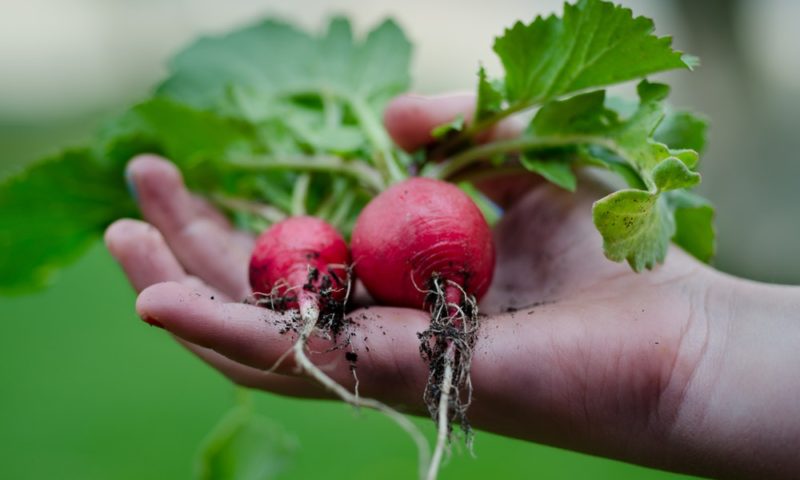Before you know it, Winter will fade away and open the doors for you to usher-in Spring. It’s not too early to begin thinking about fresh Spring produce and how you can reap its benefits!
There’s no better way to eat fresh, healthy food than to keep your kitchen stocked with produce — from fruits and veggies to various herbs, all packed with powerhouse nutrients.
But what if this Spring, you reaped the health benefits of these crops by planting them yourself? Avoid the high produce costs, GMOs and questionable “freshness” by taking advantage of your own backyard — at a fraction of the cost PLUS way more fun!
Ground Rules for Planting a Garden
Whether you’re a novice gardener or you’ve got somewhat of a green thumb, planting a garden can yield amazing health benefits — and it’s totally possible no matter your skill level.
Step 1: Know Your Terrain
What kinds of outdoor conditions are you working with? Consider how much sunlight your outdoor space gets, as well as what soil type you’ll be using. How is your land shaped? Answer these questions to choose your garden size and various crops.
Step 2: Choose Your Garden Style
Maybe you want to build a raised garden bed or use old pallets lined with weed stoppers to house small plants. Maybe you want to grow straight from your land. Ask yourself, “What style suits my personality and will be doable with the outdoor conditions I have?”
Step 3: Select the Right Crops
What have you always wanted to grow yourself? What kinds of fruits, veggies and herbs will your family enjoy? Sit down together and come up with a list of crops that will be useful for cooking and snacking on, and that will also survive in your home environment.
Step 4: Research Your Crops
Once you’ve identified your desired crops, learn more about them. After all, not all plants grow and behave the same way! Research how often they’ll need to be watered, what food or care they respond well to, what kind of light they’ll need and other important details.
Step 5: Gather the Right Tools
Gardening can be as simple or as complex as you make it, but you’ll probably need a few stables: a sturdy pair of gloves, plant food, a shovel or spade, a watering container, healthy soil, a sun hat, a pair of clippers, and clothes you’re not afraid to get dirty.
Step 6: Involve Your Family
Planting and harvesting a garden is an excellent activity to share with loved ones. Plus, it can yield a variety of practical and nutritional benefits for everyone. Treat gardening like a treat, not a chore, and get your whole family involved in the process from start to finish!
After It’s Planted…
Once you’ve planted your garden, don’t forget to tend to it! Dedicate routine time(s) each week to caring for your garden and helping its crops grow strong and healthy. If you run into a few problems or dead plants, research what changes you can make for future success.
Also, be sure to wash your crops before cooking with them or eating them. Then, get creative by adding them to tasty new recipes which show off their flavor! Eating fruits, vegetables and herbs will never be the same again after you’ve grown them from a garden, and that’s a fact!





